The unlikely story of how a largely self-taught artist nurtured his passion for art, and of how his creativity, spirituality, and ultimately his “artistic voice” evolved.
Plein Air Painter Roger Dale Brown: Pursuing His Passion for Art
by Charles Raskob Robinson
This is the unlikely story of how a largely self-taught artist and plein air painter, Roger Dale Brown (b. 1963), nurtured his passion for art, and of how his creativity, spirituality, and ultimately his “artistic voice” evolved. Renowned for his teaching skills, Brown is a leading member of the American Society of Marine Artists, Oil Painters of America, American Impressionist Society, Salmagundi Club, Cumberland Society of Painters, and Chestnut Group. He is also past president of the Plein Air Painters of the Southeast.
Born in Birmingham, Alabama, and raised in Tennessee, Brown traces his passion for art to age 4: that’s when his mother introduced him to crayons and watercolors so successfully that he was soon using them on larger surfaces — namely, his mother’s walls. By high school, he was fairly accomplished, but after a stint at college, various jobs, and a whole lot of boxing, art was no longer Brown’s focus.
He got a job selling eyeglasses and became a licensed optician; it was in this capacity that the passion for art resurfaced through an unusual twist of fate. A customer came in to get some glasses and soon revealed he was a muralist seeking an assistant. Brown expressed interest and, after presenting his high school art portfolio, landed the job. One day, when his muralist boss failed to show up for a meeting with a new client, Brown announced that he himself could produce the Monet-like work requested. The client liked his oil sketch and proceeded to commission the larger work. Today Brown recalls it as “the most horrifying experience of my life,” but he also remembers thinking to himself, “Now I am an artist!”
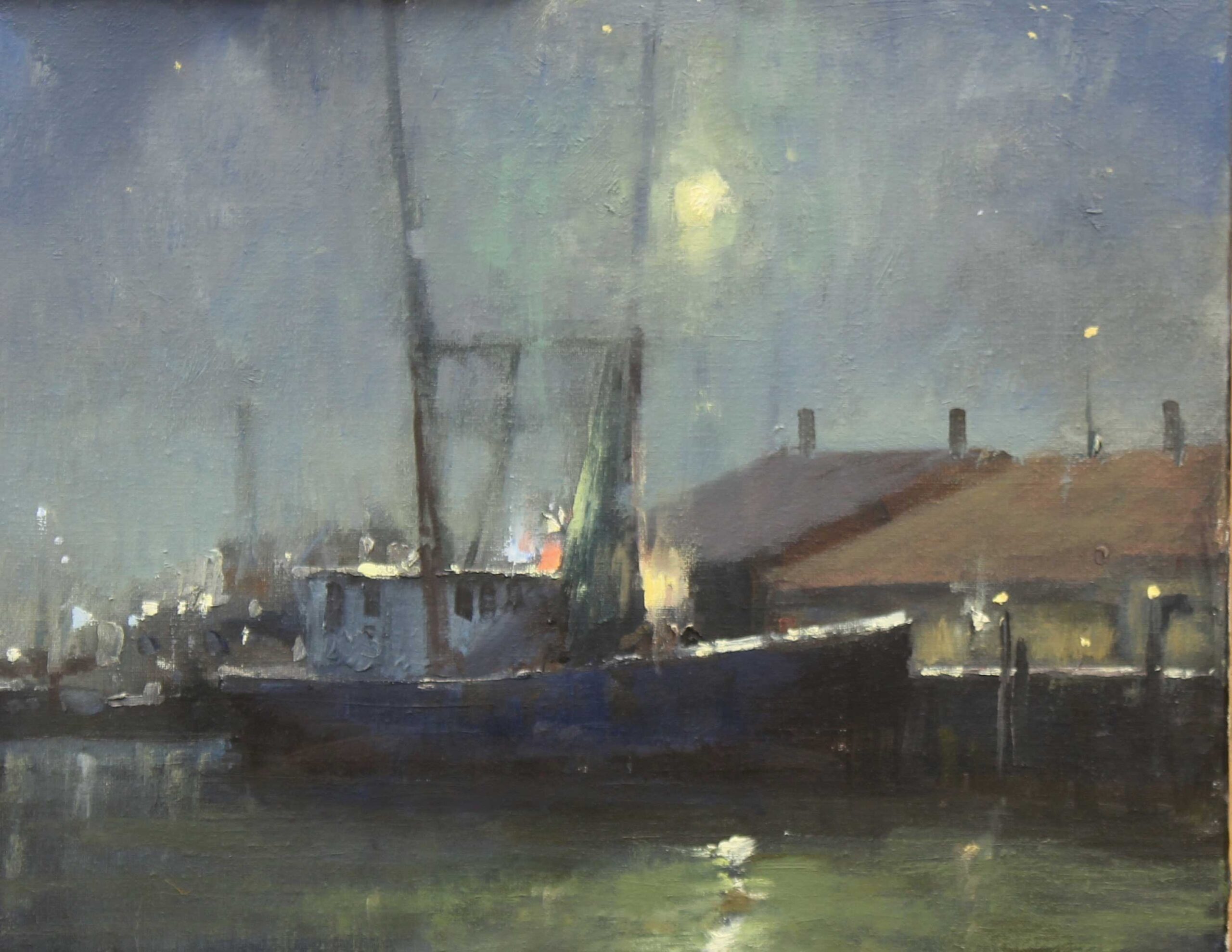
Onward
In 1999 Brown got his first introduction to painting on canvas through lessons from Hazel Mae Crye King (1917–2017). 2002 was a pivotal year as he began taking lessons from Dawn E. Whitelaw (b. 1945), a former student of Everett Raymond Kinstler (1926–2019), with whom Brown also studied later.
“Dawn Whitelaw taught me the mentality of an artist in every aspect,” Brown says. “There were others who became great mentors, but Dawn holds a special place for me.” That same year brought Brown into contact with another fine teacher, Jason Allen Saunders (b. 1972), who suggested a workshop with Scott L. Christensen (b. 1962). This became a turning point because “Scott became my mentor, set me on the right path, and planted certain basics in me, one of which was setting goals for myself.”
Brown’s first such goal was to paint one plein air work every day for a year. Although he came up a bit short — completing 350 out of 365 — this project was a success because Brown “spent a lot of time learning — going to my own school with my own curriculum and schedule. I became disciplined and truthful with myself about my progress and how much more I had to learn.”
In 2004 Brown put himself to the test: “I held my first workshop and made myself practice what I preach.” This proved more consequential than he could have imagined: he realized how much he loves to teach and he fell in love with a student, Beverly Ford Evans, another Tennessean and a graduate of the O’More School of Design in Franklin. She became his constant painting companion and, in 2014, his wife.
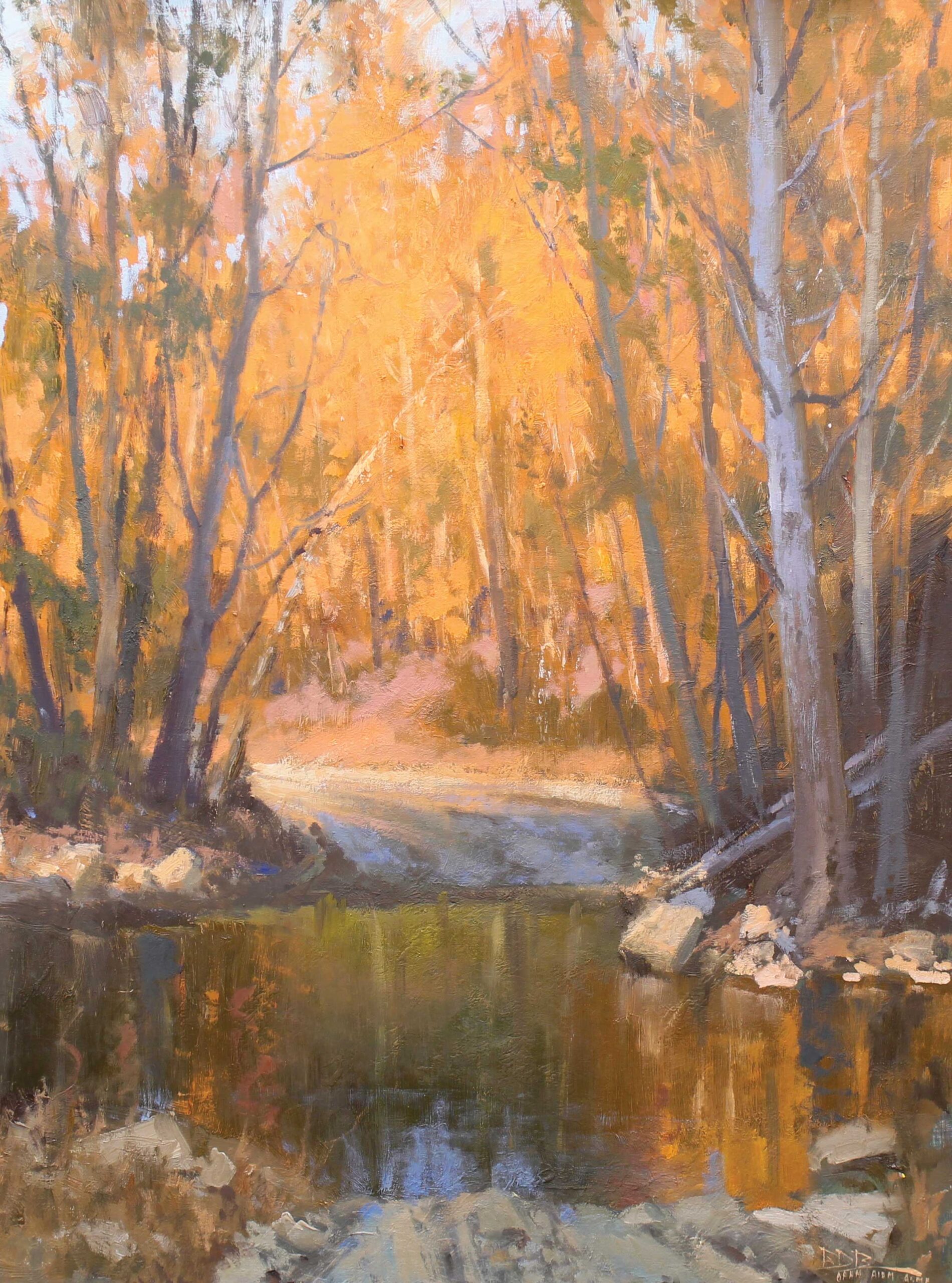
Different Ways of Seeing
Brown reflects, “The successes that have come my way have been mostly through persistence, hard work, studying art and art history, experimenting, and practicing the art of observation. At the beginning of every year, I set new goals to improve my career.” His first goal sounds rather basic: to improve his artistic skills. How?
“First, I always paint for myself — never for the market. Second, I study both the Old Masters and contemporaries who inspire me, especially those who push the limits, and I continue to build a library of art books. In short, I seek to develop a critical eye to learn how to see — basically to know how a good painting should be created.” And for colleagues who tend to focus on one genre (such as marine subjects), Brown stresses the importance of becoming well-rounded: artists always grow when they move back and forth between still lifes, landscapes, figures, and portraits.
Brown estimates he spends 40 percent of his time painting outdoors and 60 percent in the studio, yet he stresses the significance of the former in contributing to success in the latter. One is not subservient to the other. “Good painting is good painting,” he declares, “but plein air painting permits a one-on-one relationship with nature you can’t get indoors. There is an immediacy to being outdoors that evokes so many emotions.”
Moreover, “Outdoors you learn the relationship of shapes and values and nuances and how to use important elements and eliminate others. In short, you manipulate what you are seeing into a good composition. In the studio, it is just God, my canvas, and me. Painting on location is my school, but indoors is where I really can create. I try to use information gathered outside to create something inside. These are two different experiences, but I would not be successful in the studio without my plein air experience, which, in turn, is furthered by studio time.”
A key step in the development of Brown’s approach came when Gary Young, one of his former students and now a close friend, introduced him to a Fellow of the American Society of Marine Artists (ASMA), Charles Warren Mundy (b. 1945). Brown admired C.W. Mundy’s desire to “build up and tear down a painting, then bring back the key elements in order to reiterate the work’s visual intent.” Underlying this creative/destructive/recreative philosophy is the artist’s willingness to accept failure; there is a risk that he or she might not bring the painting back successfully. “In trying this approach,” Brown recalls, “I learned more when I had the guts to fail — to step out of the box and try things that are against the rules. I found this invaluable.”
Having settled on a subject, Brown begins the first stage of his process — to “Un-Define” the scene, to eliminate all preconceived notions about it in order to freely appreciate how and why it attracts him, “to see as an artist sees it.” This means observing the subject “as mere shapes, colors, and values.”
Next, Brown “Prepares to Rebuild” the scene he has just mentally deconstructed. Here he finds it helpful to view the subject’s elements on an abstract basis by looking at the color and value within each, to start forming an idea using visual language. In the final stage, the “Rebuilding Continues.” Here the abstract becomes more representational, but Brown cautions, “Become the creator, not the follower. Do not become tied to a scene; be inspired by it. Your ultimate aim should be to evoke the mood of a strand of time.”
Although Brown acknowledges that his approach is not for every artist, his “vital stages of the painting process give me a uniqueness that has become my voice as an artist.” He regards the various “isms” — realism, abstractionism, modernism, impressionism, etc. — as “philosophies” and does not adhere to any one of them. Rather, he draws upon them all according to the needs of the scene and the circumstances he seeks to capture. “I do not want to develop a specific look or style,” Brown says, “but a fusion of styles that has the mark of my voice.” He warns, “Wanting to paint in a particular style limits your creative possibilities.”
Most basically, Brown notes, “An artist should be attracted to the subject she or he seeks to memorialize on canvas. I always start my paintings by visualizing the finished painting. I have better success when I have an idea in my mind’s eye of what I want it to look like. A boxer once told me that in the ring he visualizes — actually foresees — scenarios of attack and defense. The same should happen in art. I visualize the end of my painting and all that must occur from the opening bell to the finished product, including that knockout punch.”
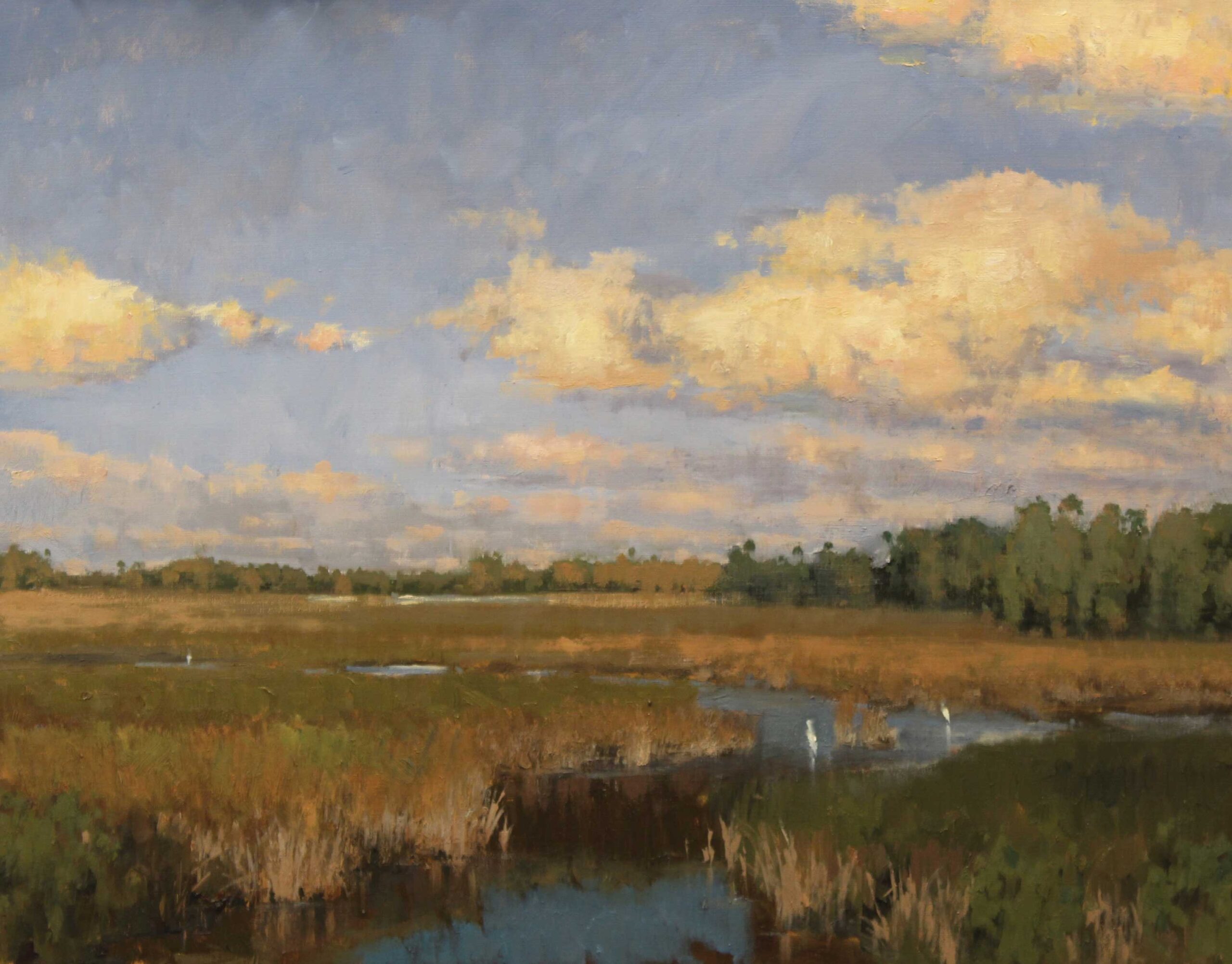
Spirituality and Travel
Brown notes, “The older I get and the more I experience, the more contemplative I become. And the more I realize that spirituality is an important part of my painting, and that painting is a passion. Painting brings in the spirit; it creates a meditative state wherein one loses track of time. We are made in the image of God, the Creator, so creativity is ingrained in us. Painting what He has created is emulating — showing respect for — what He has done.”
He continues, “It is in this context that — when a subject intrigues me, especially outdoors — I not only attempt to paint it visually, but also spiritually. This is what separates an artist from a painter. The artist strives for the viewer to understand how the subject made him feel. Knowledge gives us the tools to paint and our spirit makes us artists. When a viewer senses my emotions in a painting, then I have succeeded.” A corollary to this is that Brown uses a scene as a platform to create from, rather being literal to it. “If we do not interpret with our own voices, we deprive ourselves of fully using the talent given to us.”
Travel has also played an important role in the development of Brown’s voice. He and Beverly Ford Evans travel widely every year and are particularly attracted to such beautiful places as the Rocky Mountains and Maine, which Brown thinks “has an old soul” to which he relates easily. Inside his second book, A Passion for Painting (2015), are chapters that read like adventure stories — hiking to great heights and deep into swamps, close encounters with alligators, snakes, grizzlies, and wolves, and much more. The couple have also traveled to China, South America, and Europe; most recently they spent six weeks on a Scottish loch preparing for their first joint exhibition, Inspirations from the Highlands, seen at the Berkley Gallery in Virginia last winter.
Brown and Evans always remain long enough to truly understand the locale — the basis for any successful painting. He notes, “Long stays help me become familiar with the scene, culture, and feel of the area and moment. This is crucial to my creative process. Most of my studio paintings are created from memory, so the field studies are my preparation for that.”
Brown’s passion for art began at age 4 and has grown steadily; now he uses his artistic voice to convey full-throated enthusiasm for all creation. This is best expressed in a passage from the Book of Psalms that he quotes on the opening page of A Passion for Painting:
Let the heavens Be Glad, and let all the earth Rejoice;
Let the sea roar and all that fills it;
Let the field Exult and everything in it!
Then shall all the trees of the forest Sing for Joy for your glory.
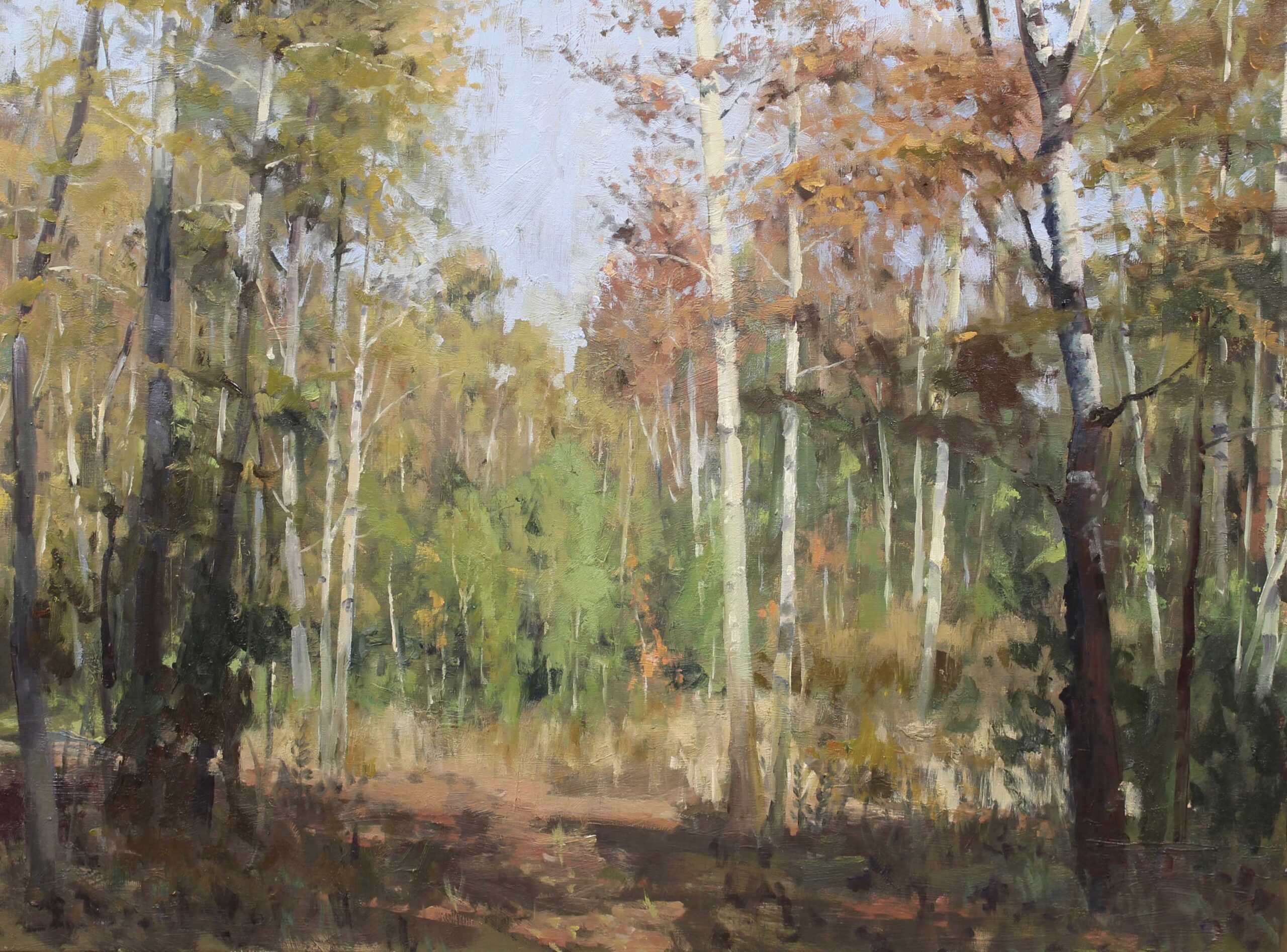
Helpful Links:
- Get your copy of Roger Dale Brown’s book, “A Passion for Painting”
- Visit our sister site, OutdoorPainter.com to learn more about the life of today’s plein air painter
- Discover more landscape paintings here at FineArtConnoisseur.com

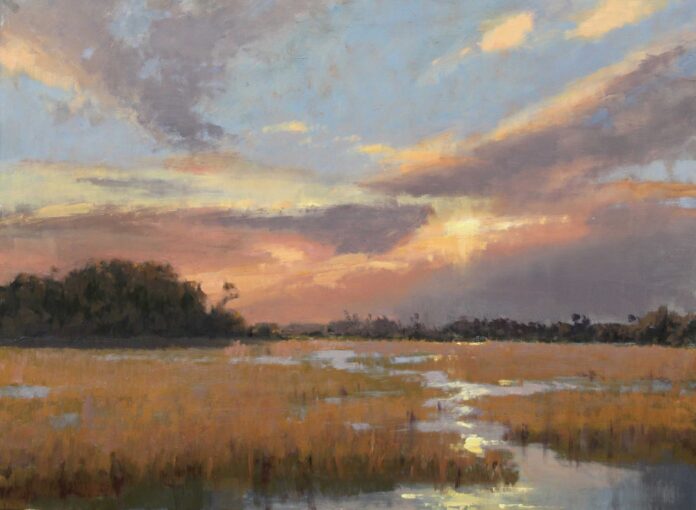







Roger, I was very anxious to read your story. I have always known that you were a special person in the Arts.
I identify with your passion. A young mother of 6 children, and NO formal training, God sent me a wonderful teacher and mentor and 3 years in a place called Paradise Ca. There I worked ( and I mean ‘worked’) and took part in starting a ART “school”up there on the mountain.
There’s not doubt in my mind and in my heart that it was because of my “passion” that became an answer to prayer from God , who gave me the best Art teacher & spiritual experience that anyone could ask for.
I hope you don’t mind that I’m sharing my story. I just identify with your experience , and love your beautiful paintings that are filled with passion and love.
All the best to you and your beautiful partner & wife.
Sincerely ,
Sandra Bos
http://www.sandrbos.com